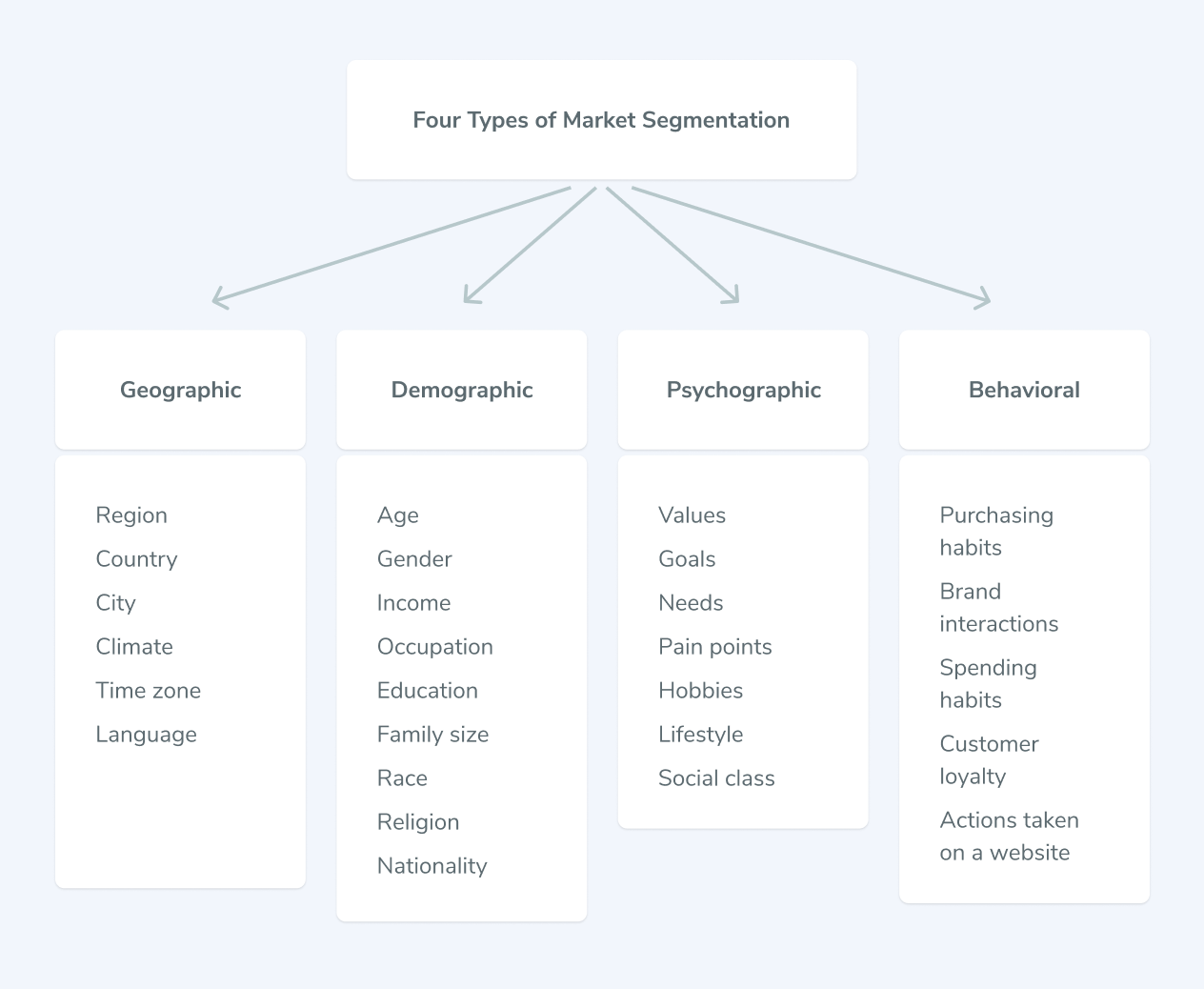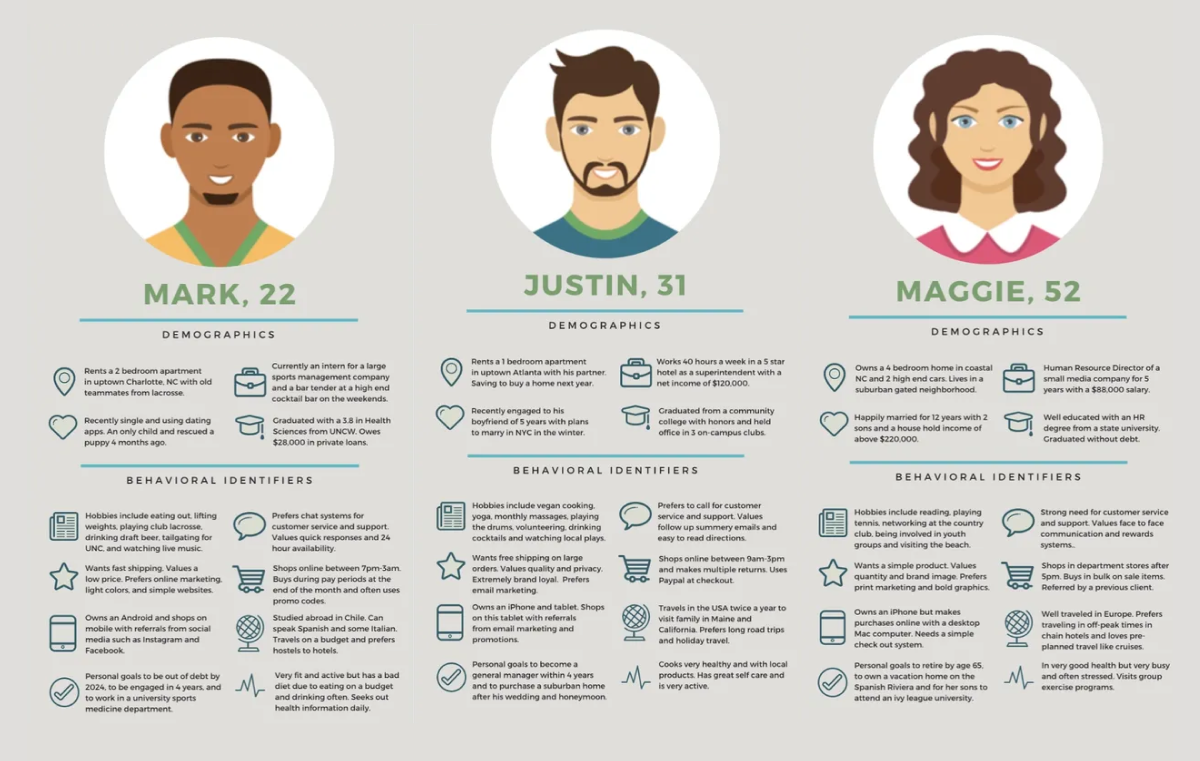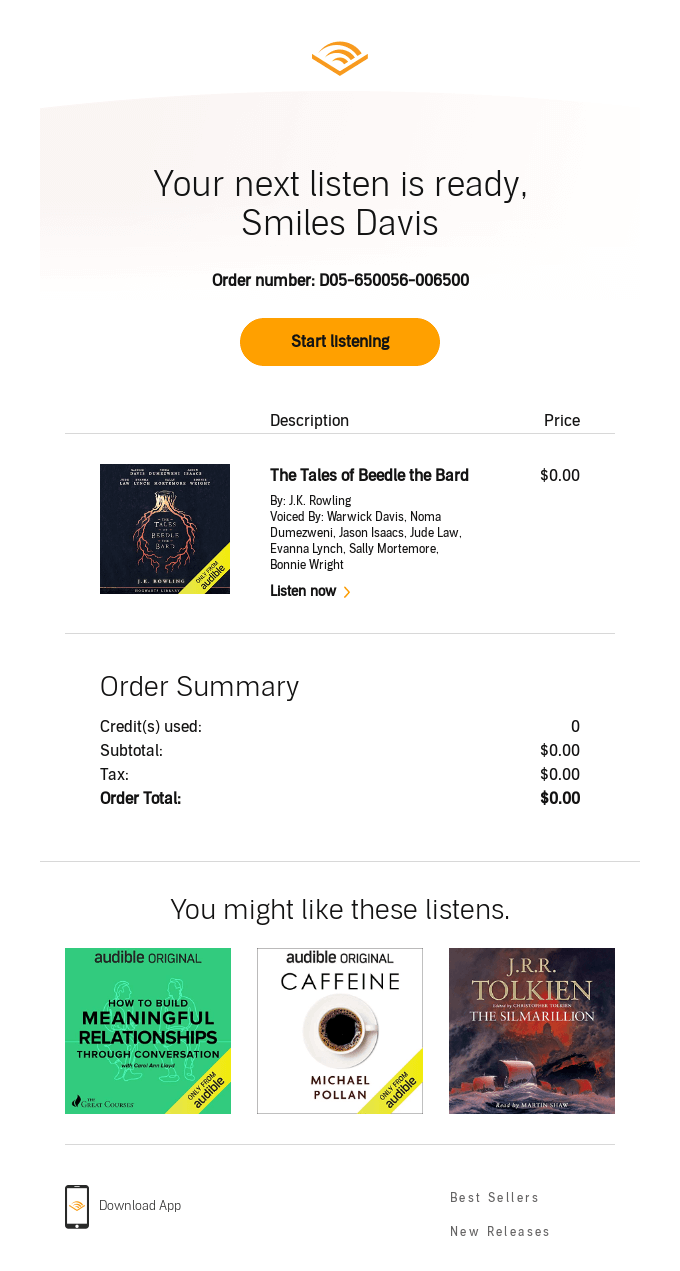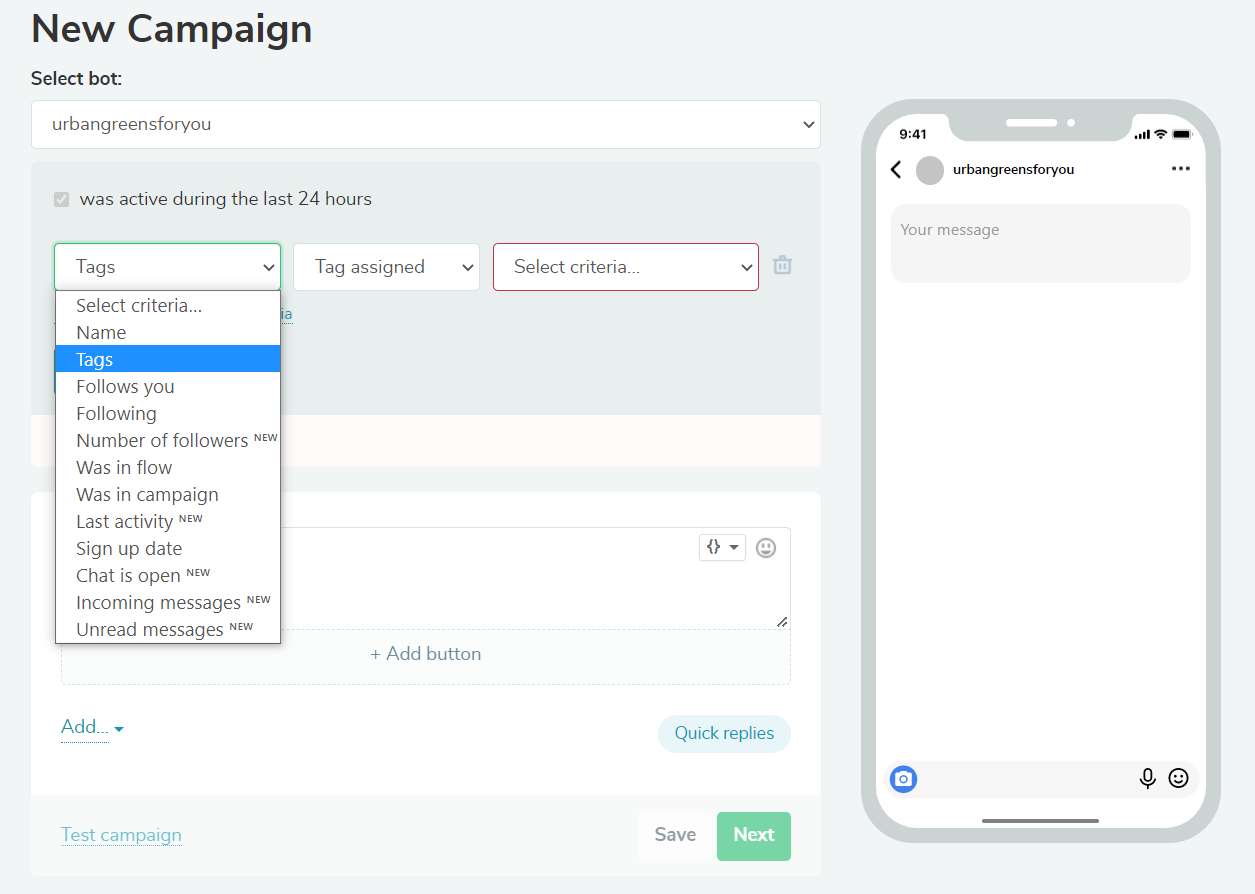It is the era of personalization, and nobody watches the same collection of ads on the TV — everyone enjoys banners of relevant products that they actually might want to buy.
At this point, customers themselves want to see personalization — 71% of them feel frustrated when shopping feels impersonal, and 91% are more likely to shop with companies that provide relevant product recommendations. So if you don’t have personalization, you are far behind, both in competitors’ and customers’ eyes.
Audience segmentation is a great way to personalize your customer experience. Keep reading to learn more about customer segmentation benefits and best practices.
What is audience segmentation?
Audience segmentation is a marketing strategy where you break down your big audience into small groups and offer them different recommendations and types of content. The segmentation can happen based on location, gender, age, etc. So, for example, you can send promotional emails offering umbrellas to audience segments that often have rain in their towns or cities.
Discover some promotional ideas to increase your sales!
After you have divided large groups into smaller ones, you can send them different product recommendations, tailor visuals or tone of voice to their liking, and send more personalized emails and relevant content.
Why is segmentation important in marketing?
Audience segmentation needs some effort on your side: you will have to collect a lot of customer data and try to create groups in the most efficient ways, and then find out what that group likes the most. So does it really matter, and is it worth the effort? Or is it just another marketing buzzword? Why do companies use segmentation?
Let the customer segmentation benefits answer the question for you.
Better customer retention
They say that communication is a key to customer retention, but we often forget that this communication should always be relevant. It is genuinely a hit-or-miss situation. If you send personalized messages to certain groups of semi-interested customers, they may love your brand even more. But if you bombard consumers with absolutely irrelevant information, you can lose even your most dedicated fans.
80% of customers prefer to shop with companies that provide personalized shopping experiences. Thus, audience segmentation is your hit move here.
More new customers with fewer resources
51% of retail shoppers expect brands to anticipate their needs and provide relevant product suggestions even before they make any contact with that brand. Thus, segmentation is a great help when it comes to targeting. In fact, it is one of its main components.
Learn more about targeting different segments to promote your products.
So let’s say you didn’t do your targeting homework, and you let 1,000 people see the ad of a women’s anti-age cream.
You will hope that 50% of people who saw your ad were women, and at least 25% of them are above the age of 35. However, 65 and 35 years old might want the cream for different reasons and prefer different tones of voice and aesthetic. So you are narrowed down to 10% who might be interested. At least half of them will already have a cream, so you are left with just 5% and wasted 95% of your resources.
Now, if you segment your customers, you would not have to target men, women under the age of 35, and those who don’t appreciate your communication channels and tone of voice. So you would spend the same money but attract way more customers, which is a marketing dream, isn’t it?
Higher revenue
According to the McKinsey report, retail companies can expect to make 3-5% more sales by running personalized marketing campaigns for different audience segments.
Moreover, if you retain customers and boost your conversions through segmentation, you will be able to significantly boost your revenue. There will be more customers, and they will spend more money in their lifetime, so it is a win for you, no matter how you look at it.
Four types of market segmentation
You can divide customer groups by different characteristics and your message will differ in various ways based on it. So let’s take a look at four types of market segmentation.
 Common ways of segmenting your customers
Common ways of segmenting your customers
Demographic
It is one of the most popular segmentation types in marketing. Your main focus is the who, meaning that your segmentation variables are gender, age, income, religion, and profession. For example, it is not the best idea to show ads of luxury brands to people with a lower level of income or promote Barbie dolls to seniors.
Geographic
Geographic type is about categorizing customers depending on their location. It is not the most popular segmentation type because it is way too broad, but it is widely used as an addition to other types of market segmentation. Based on the location, you may want to rethink your language and currencies, as well as message and visuals, because different cultures value different things and might find offensive things that are completely normal in your culture. You can also send messages based on local weather, major news, events, holidays, etc.
Psychographic
Psychographic segmentation type is focused on personalities. You should divide customers by their interests, lifestyles, values, and beliefs. It is one of the most powerful yet the most challenging type because you will need to do a lot of research, especially surveys, to implement this one. Google Analytics does not provide clean and effortless graphs compared to the previous two types.
Discover some strategies to increase your survey response rates at no extra cost.
Behavioral
Behavioral segmentation is based on previous interactions of your customers with the business, meaning their spending, purchasing, and browsing habits, loyalty to the brand, and recent product feedback. For example, you will not give returning customers a coupon for their first purchase, and you will not offer loyalty program sales to newcomers.
Customer segmentation best practices
So how do you collect all your data exactly? And where do you incorporate your findings? Are there any customer segmentation techniques to get the most out of segmentation? Let’s find the answers below.
Create customer profiles
So you decided to try customer segmentation — what is next? At first, you need to decide the segmentation type you would like to choose and collect data from available sources. If you choose demographic, the easiest type, you can find all the information about your audiences in Google Analytics, eCommerce platform, or customer relationship software that you are already using. The same goes for behavioral and geographic types. For psychographics, you will need more information than that — the most accurate way to find out more about your customers’ interests and lifestyle is surveys and interviews; you can also use third-party data researchers and providers as well as marketing segmentation software.
You can create typical customer profiles after you have all the data in place. For example, Christina — female — 35 years old — lives in Ohio — uses Facebook more often than other communication channels — married with two kids — has medium-income — likes yoga and dogs — her typical day looks like…, etc. Make as many of them as you have audience groups.
Write down the group’s needs
It is not enough to just know how different your customer groups are — you have to know their needs and preferences: what type of products they may be most interested in, what problems they have that this product can solve, what their preferred communication channels are, what kinds of colors and fonts seem to be the most attention-grabbing for them, etc.
Here’s an example of how you can structure all the information about different user segments:
 A detailed customer profile can help you develop a stronger relationship with your audience; source: Boagworld
A detailed customer profile can help you develop a stronger relationship with your audience; source: Boagworld
Prioritize your segments
Some customer segments are bigger and more valuable than others. For example, you may see women as potential men’s cologne buyers because they may want it as a gift for their husbands, dads, brothers, or boyfriends. And yet, they will bring less profit than actual men and you may want to focus on them on specific days like Christmas, Valentine’s Day, etc. rather than the year around. It will not be the smartest decision to put all your efforts and research into women while your main consumers are men. So learn to prioritize and work the most for your biggest segments.
Tailor your emails to consumer segments
If you wonder where to use your customer segmentation, emails are usually the first choice. Millennials, for example, hate to see irrelevant emails, and will get straight-up annoyed if the brand communication is generic.
So send emails with different product recommendations, news, and visuals to different segments and keep retention rates high and unsubscribe levels low. Down below, you can find an email with the highly-personalized content that perfectly meets the needs of a chosen consumer segment.
 An email sent to a customer based on their recent purchase; source: ReallyGoodEmails
An email sent to a customer based on their recent purchase; source: ReallyGoodEmails
Provide only relevant content
Audience segmentation is not only about relevant product recommendations but also about content suggestions. For example, if we talk about sports websites, you will have to rely on psychographic segmentation and give them content based on their interests, whether it is articles about gymnastics, weightlifting, or fishing.
Consider segmenting your chatbot audience
You can teach chatbots to take different segments of customers into account as well. For example, there is an option to do a personality match based on the user’s questions: if they use an official tone and negatively react to funny GIFs, the chatbot will use a more official tone as well, but if they enjoy more playful conversations, it will go on its designed paths.
Chatbots can also give recommendations based on small surveys. Make sure that you created the survey based on your customer segments and their needs to find the perfect product for the customers.
In SendPulse, for example, you can segment your customers by assigned variables or tags, whether they got or not a chosen flow or campaign.
 SendPulse allows you to segment your chatbot audience by various criteria
SendPulse allows you to segment your chatbot audience by various criteria
Bottom line
Audience segmentation is a powerful marketing strategy that allows businesses to stay on top of the competition in the era of personalization, boost their revenues, and create better relationships with customers.
You can segment customers based on demographic, geographic, personality, or behavior and build segments based on data from Google Analytics, CRM, CMS, customer surveys and interviews, third-party data companies, and marketing segmentation tools.
After you have all the customer personas, you may start implementing your new knowledge in product recommendations and content on your website, in your emails, and chatbots.
If you are looking for email or chatbot audience segmentation, do not hesitate to try SendPulse and make your customer experience unforgettable.